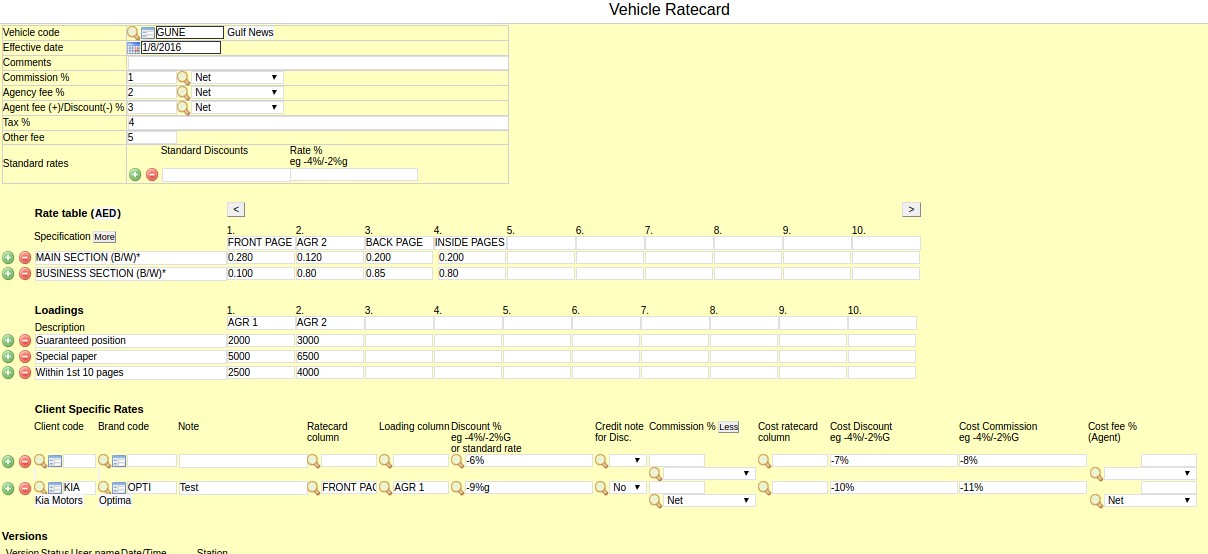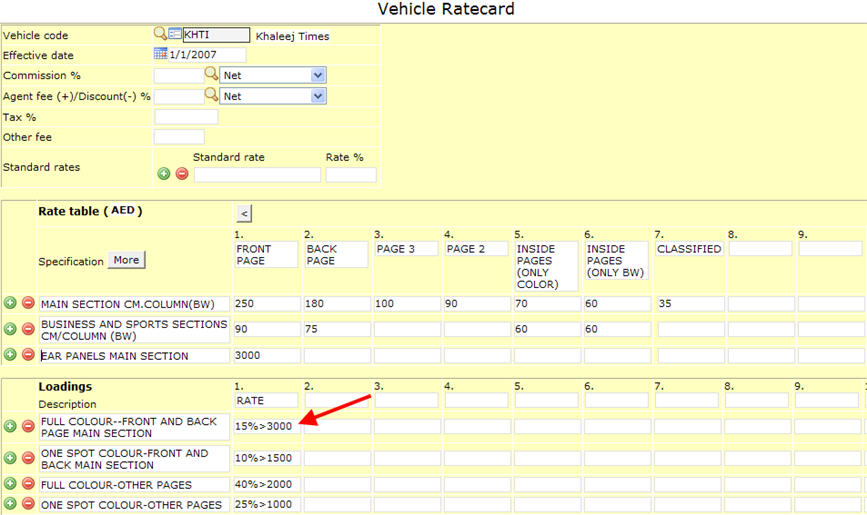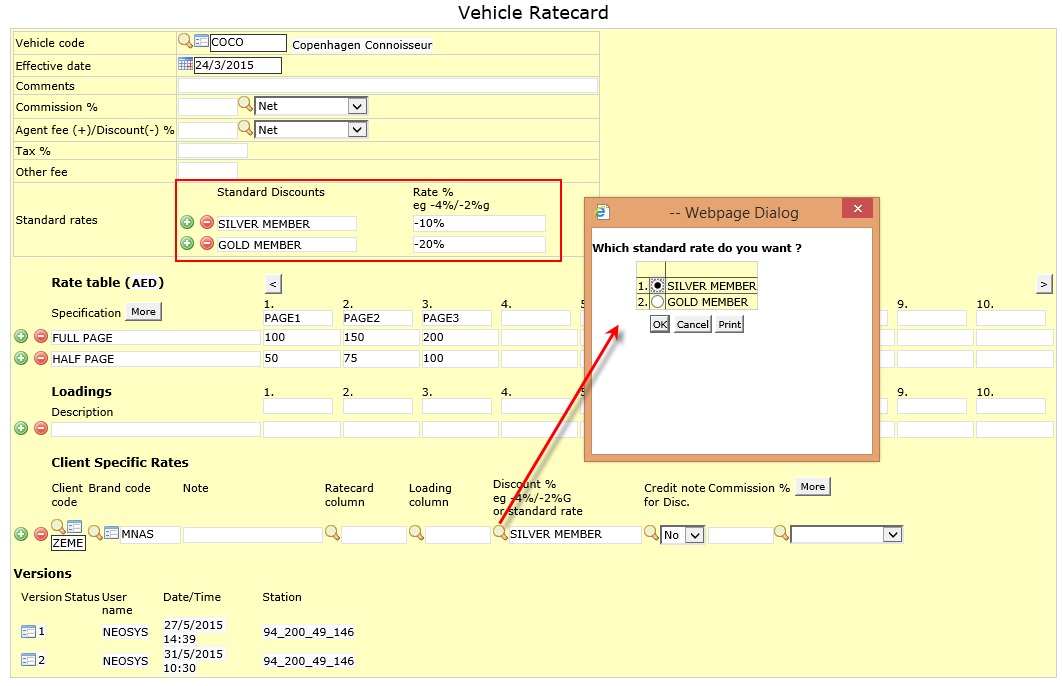Vehicle Rate Card File
Entering Vehicle Rate Cards into NEOSYS
Standard pricing and costing information can be entered into the Ratecard File in NEOSYS where it can easily be accessed while creating media plans and schedules.
Rates can either be gross rates for individual ads or the rate can be per column centimeter or per second etc. When the rate is dependent on size or duration, the final cost per ad is calculated depending on the size/duration entered in the schedule. "Sized" rates are indicated by an asterisk "*" character without the quotes either within or at the end of the specification column. eg INS PG* would be converted to INS PG*20X4 on the schedule. You can also enter the main or fixed sizes of a publication directly into the ratecard like INS PG*20X4.
NEOSYS allows the precise rate card information to be fed in the system which can very easily be retrieved when preparing the schedule. There is a separate column for loadings like color or position loading where the loading charges can be specified.
Specifying a minimum amount in the rate card
The 'greater than' sign is required after the percentage and before the minimum amount with no spaces eg 20%>2000 means loading of 20% with a minimum of 2000.
In the image you can see in the loading section (where the arrow points) an example of how you document a minimum amount in the rate card which on the actual rate card was mentioned as '15% extra charge for full colour (minimum Dhs 3,000)'.
Standard rates
The standard rates is a table for standard discounts and their corresponding discount values. These standard discounts appear in the "Discount%" field under "Client Specific Rates" as shown in the screenshot below.
In the screenshot below, under Client Specific Rates STANDARD1 is chosen as the discount for brand MNAS of client ZEME. So in a media schedule for brand MNAS, if vehicle COCO is used, the discount shown will be -10% since STANDARD1 corresponds to -10% in the standard rates table.


